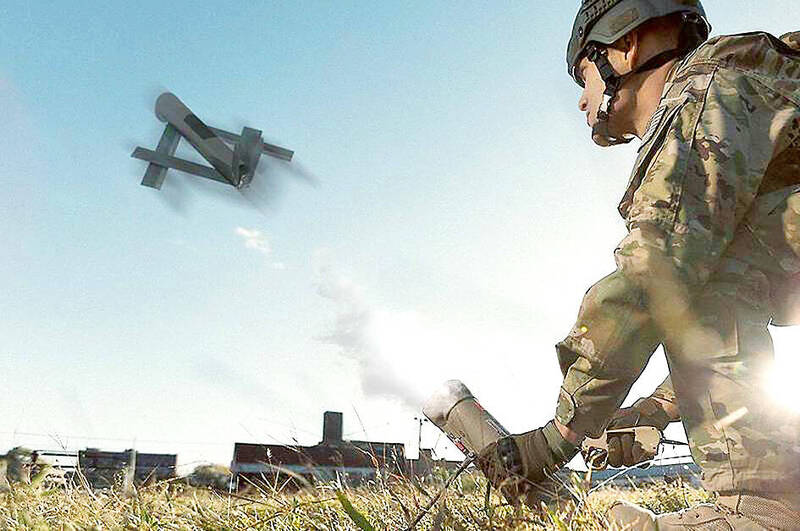《TAIPEI TIMES》 Taiwan, US need more drones to defend against China: Washington think tank

A Switchblade 300 drone is launched in an undated rendering. Photo: Screen grab from AeroVironment’s Facebook page
By Chen Cheng-liang and William Hetherington / Staff writers
Taiwan and the US should invest in low-cost, long-range drones to be deployed en masse in the event of a Taiwan-China military conflict, a US think tank said in a recent report.
In a report titled “Swarms over the Strait: Drone Warfare in a Future Fight to Defend Taiwan,” released on Thursday last week, Washington-based think tank the Center for a New American Security said a diversified fleet of drones could help stave off a Chinese invasion of Taiwan.
“The United States needs a diverse fleet of aerial drones that includes a mix of higher-end and cheaper systems,” the report said.
That mix should include “‘good enough’ long-range drones for target acquisition and strike,” as well as “a smaller number of stealthy drones that can conduct surveillance in highly contested airspace,” along with “more sophisticated drones ... as a part of the collaborative combat aircraft program,” it said.
However, as the US alone could not compete with China in drone production, Taiwan would also need to invest heavily in building its own drone fleet, the report said.
“Chinese forces are better positioned to leverage drones than the United States or Taiwan. China already has a large and diverse fleet of relatively inexpensive drones that it could employ to find and attack US and Taiwanese forces,” it said.
The US would need to acquire more long-range drones, Taiwan would need to build up its fleet of short and medium-range drones, and both would need to develop “more sophisticated and autonomous drones for the future,” it said.
If a conflict broke out today in the Taiwan Strait, China would have an advantage due to its larger drone fleet and ability to manufacture military drones at a lower cost, the report said.
The US Department of Defense should “explore efforts to repurpose existing technologies, such as the Vampire system created for Ukraine, and find gun or cannon-based systems that can be fielded quickly and are much cheaper than missile interceptors,” it said.
The US military would also face a geographical disadvantage, as it would need to operate drones from bases farther away from the conflict than China would, it said.
“I don’t know if this is a fair fight,” Center for a New American Security senior fellow and defense program director Stacie Pettyjohn said.
In the Taiwan Strait scenario, many factors would work against the US, but its forces could do a lot to level the playing field to some extent, Pettyjohn said.
For example, the US could prioritize the development of “good enough” long-range drones that are cheap and can be purchased and replaced in large quantities, she said.
Such an approach would be diametrically opposed to the US Department of Defense’s current approach, which uses long and medium-range precision drones such as the RQ-4 Global Hawk and the MQ-9 Reaper, she said.
Those types of drones are in high demand and provide valuable tracking and strike capabilities, but over time are likely to be shot down, she said.
As an example of cheaper, but effective, drones that could be used for Taiwan’s defense, the US and Taiwan could employ loitering munitions, also known as exploding or suicide drones, which could attack Chinese ships in the Strait, the report said.
Taiwan could also use multilayered defense systems capable of disabling Chinese drones, it said.
The report recommended that the US establish a rigorous training program for drone pilots and develop operational concepts and tactics for the use of drones throughout the Indo-Pacific region.
Meanwhile, Taiwan could cultivate its commercial drone industry, invest in suicide drones and study how to integrate drones with ground firepower, it said.
Taiwan could also focus on maritime drones and inexpensive first-person view drone systems, which are commonly used by amateurs to film videos, but could also be used as single-use attack drones, it said.
“Ultimately, the United States must recognize that while drones alone would not win a war against China to defend Taiwan, they have become a key part of the competition and the United States cannot afford to remain behind,” the report said.
“Drones provide affordable airpower, but they have not replaced traditional air forces or been used to obtain air superiority,” it said.
新聞來源:TAIPEI TIMES
















